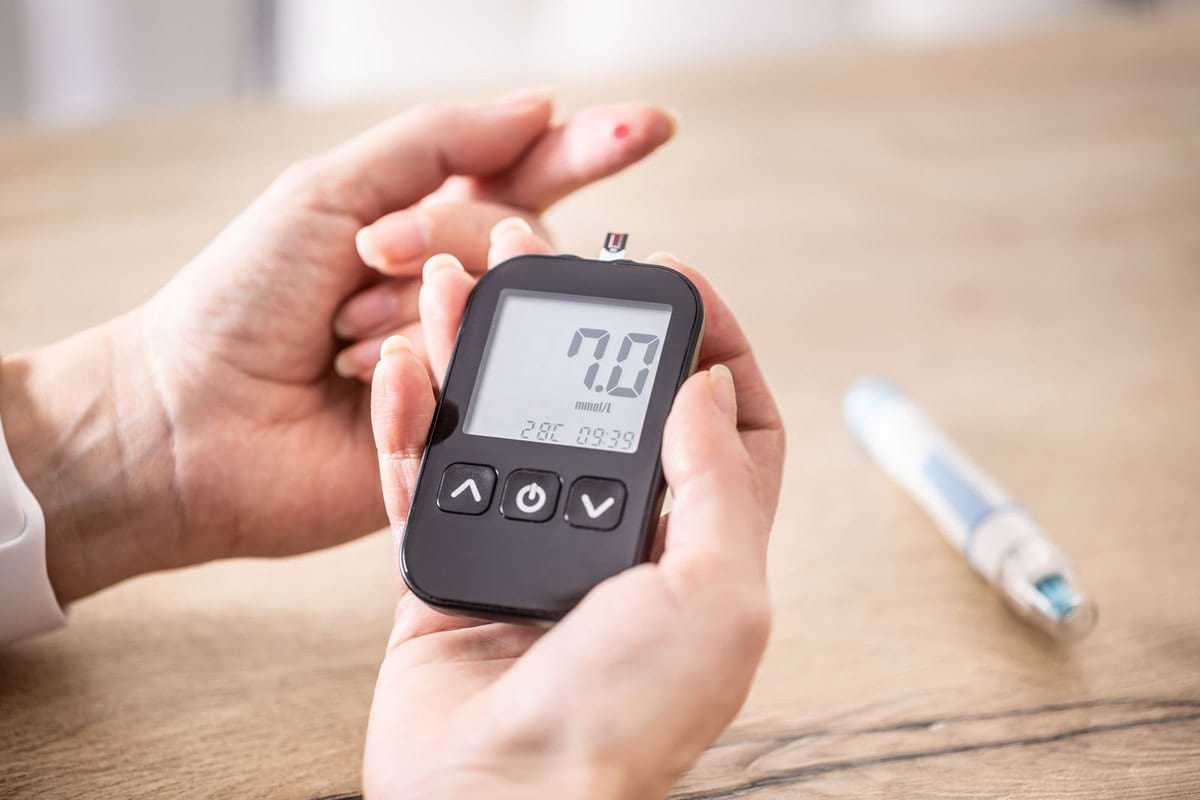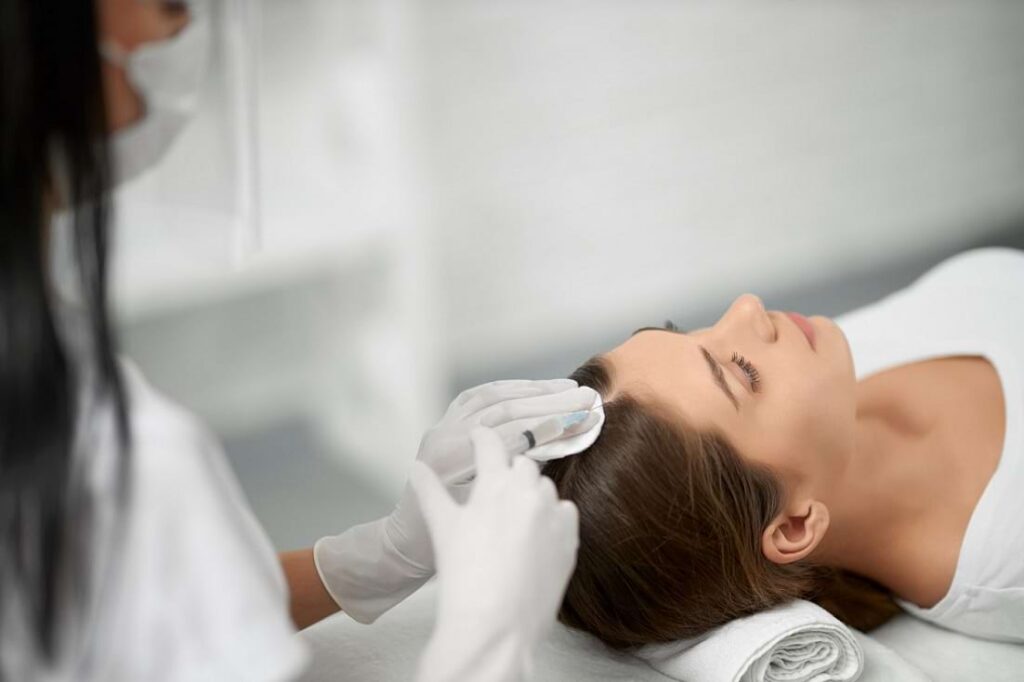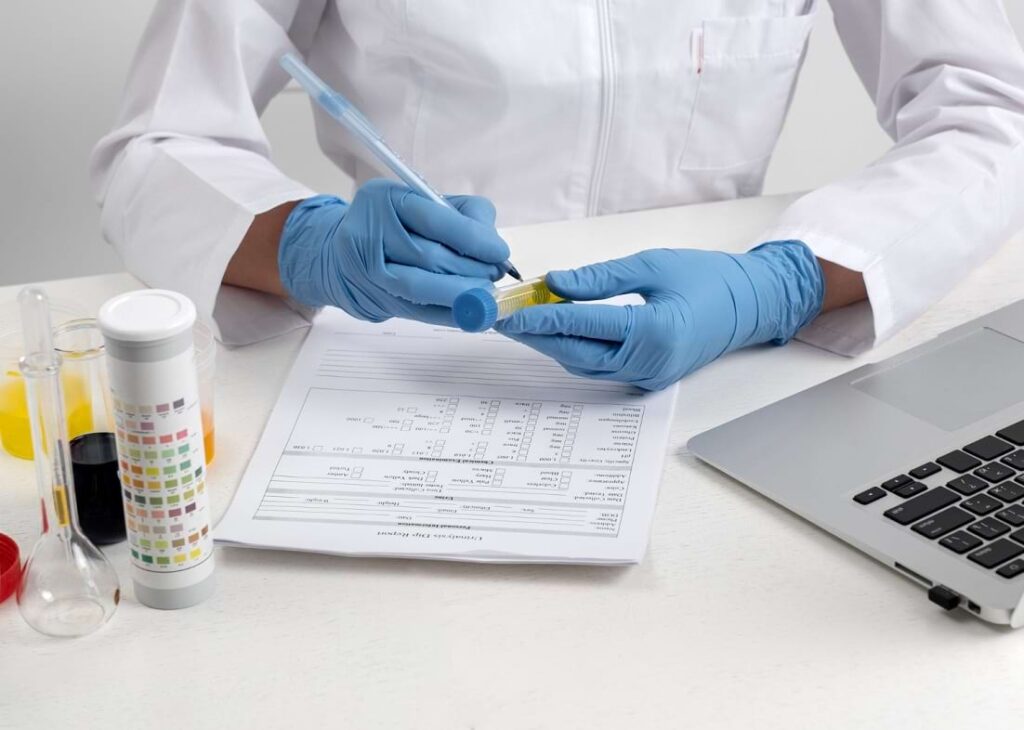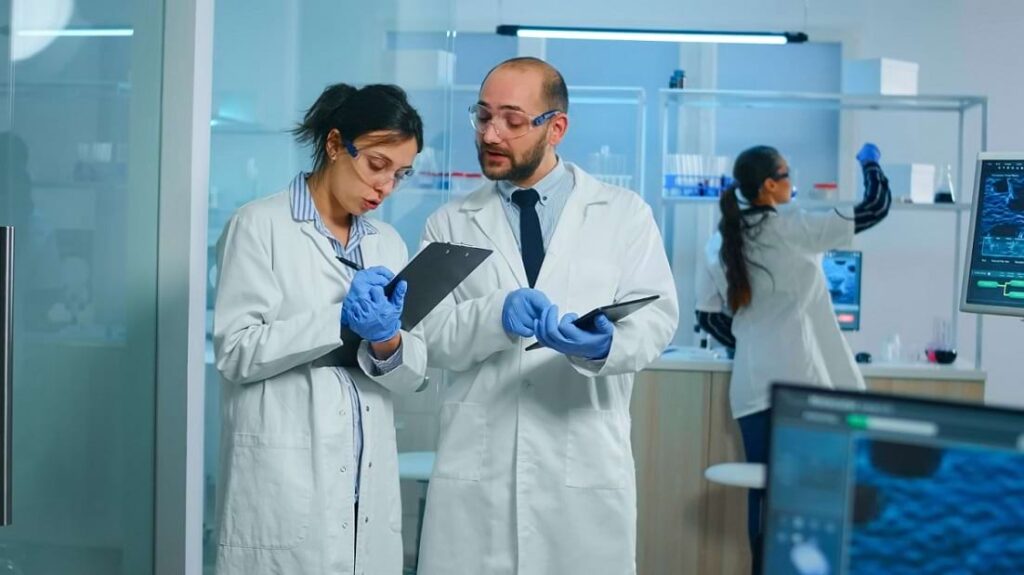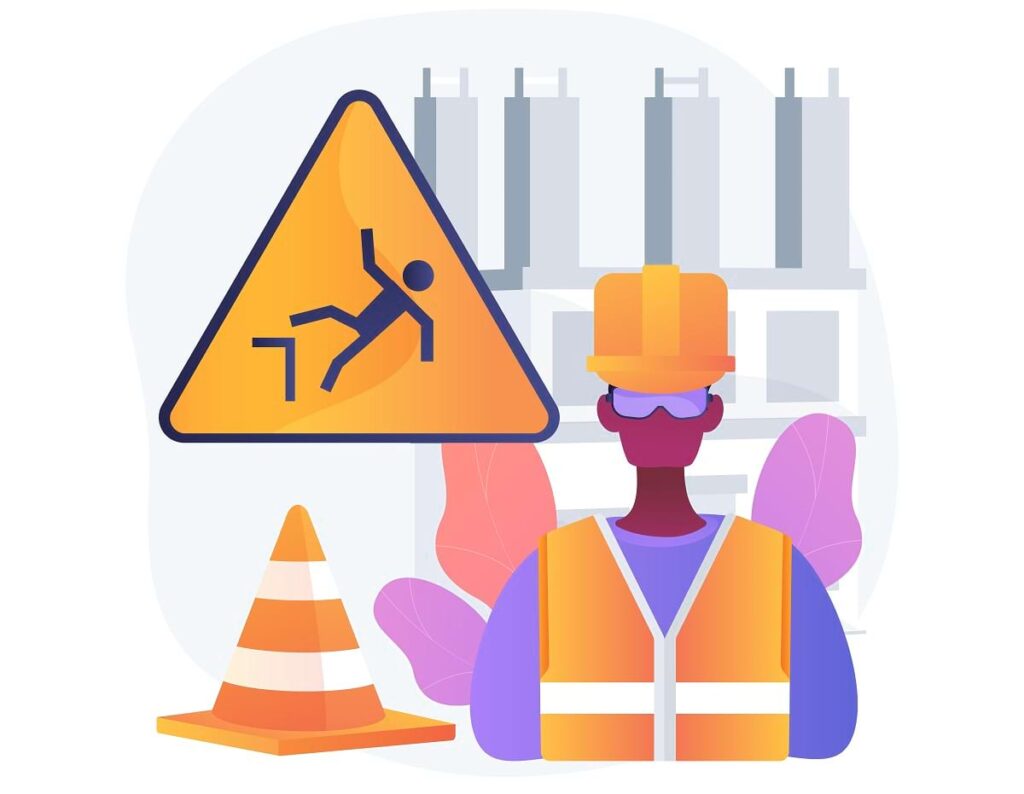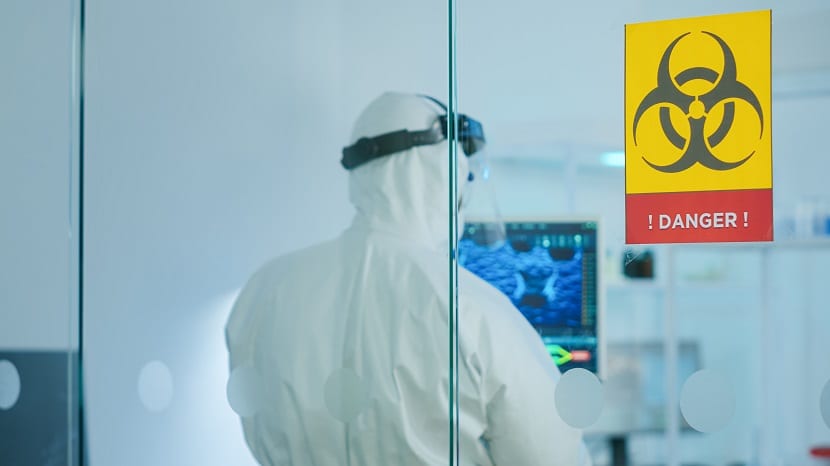Diabetes is a chronic and potentially debilitating disease that can lead to many types of medical complications, including heart disease, blindness, kidney failure, stroke, and more. More than 37 million people—11.3% of the U.S. population—have diabetes, according to the Centers for Disease Control and Prevention (CDC). Out of those, the American Diabetes Association (ABA) reports that 8.4 million people rely on the drug insulin to control their symptoms.
Per U.S. Department of Transportation (DOT) diabetes regulations, commercial motor vehicle (CMV) operators who are diabetic and are undergoing insulin treated diabetes mellitus (ITDM) are required by the Federal Motor Carrier Safety Administration (FMCSA) to complete the Insulin Treated Diabetes Mellitus Assessment Form. This is also known as form MCSA-5870 or the FMCA diabetes form.
In this blog, we explore the ITDM regulation, the role of form MCSA-5870, tips for timely completion and submission, and best practices for managing ITDM.
Table of Contents
The Role of the Federal Motor Carrier Safety Administration (FMCSA) in ITDM Regulation

Diabetes mellitus is the most common variation of diabetes. Diabetes mellitus occurs when a person’s pancreas fails to function properly. With diabetes mellitus, the pancreas does not produce enough insulin, leading to a dangerous spike in blood sugar levels and the need for ITDM. A person with diabetes mellitus will most likely be frequently tired and experience blurred vision and, potentially, other even more serious symptoms, including cardiovascular issues, loss of sensation, and more.
The purpose of MCSA-5870 is to ensure that people with ITBM:
- Have stable insulin regimens
- Have properly controlled diabetes
- Can operate a CMV safely
Recertification is required every 12 months, meaning that CMV operators must submit to a physical examination and resubmit their MCSA-5870 forms annually.
Understanding the ITDM Assessment Form, MCSA-5870

Any individual with ITBM who wishes to operate a CMV must complete form MCSA-5870. Completion of the form is part of the individual’s CMV physical assessment and, if applicable, becomes part of the applicant’s physical examination record. It must be made available to Certified Medical Examiners (CMEs) to an authorized representative of FMCSA, or an authorized federal, state, or local law enforcement agency representative, within 48 hours after being requested.
Per the FMCSA, anyone who “has recently experienced a severe hypoglycemic episode must complete form MCSA-5870.”
Form MCSA-5870 is a four-page form comprised of several sections, each featuring a series of questions designed to gauge an applicant’s ability to control diabetes and its associated symptoms.
Essentially a DOT insulin waiver, form MCSA-5870 asks individuals to answer the following questions:
- The date their insulin use began.
- If the individual has kept at least the preceding three months of ongoing blood glucose self-monitoring records.
- If the individual has provided at least the preceding three months of records to a treating clinician for review.
- How many times per day the individual tests their blood glucose.
- If the individual is compliant with blood glucose self-monitoring based on their specific treatment plan.
- If the individual has experienced any severe hypoglycemic episodes within the preceding three months?
- If the individual has had their HbA1C (hemoglobin) measured intermittently over the past 12 months, with the most recent measurement occurring over the preceding three months.
- If the individual has or is experiencing any complications related to diabetic mellitus, or target organ damage. Complications can include renal disease, cardiovascular diseases, neurological disease, peripheral neuropathy, foot ulcers, amputated limbs, and more.
- The date of the individual’s last comprehensive eye examination.
- If the individual has been diagnosed with either severe non-proliferative diabetic retinopathy or proliferative diabetic retinopathy.
- If the individual has been diagnosed with other progressive eye diseases, such as macular edema, cataracts, glaucoma, etc.
See the complete MCSA-5870 form for a full list of questions.
The Role of the Treating Clinician
The FMCA diabetes form is completed as part of the individual’s medical certification process to operate a CMV. As such, form MCSA-5870 is filled out by the individual’s treating physician at the point of care. Per the FMCA, upon completion of the form the physician attests “that the individual has a stable insulin regimen and properly controlled diabetes.”
The Certified Medical Examiner’s Part in the Process
Upon completion, individuals have 45 days to submit their MCSA-5870 form to the Certified Medical Examiner (CME) as determined by Federal Motor Carrier Safety Regulations (FMCRs). Upon receiving the form, the CME will determine if the driver meets the physical qualification standards set forth by the FCMA. If not, the CME will advise the applicant to seek further evaluation or take steps to address their condition.
If the CME deems the individual ready to drive, they will issue a Medical Examiner’s Certificate known as MCSA-5876. This certificate provides proof of certification which is provided to the driver. Certification is kept on file at the office of the CME for no less than three years from the date of the examination.
CMEs are identified based on their professional licensure and scope of practice, which must include the ability to perform physical examinations. CMEs can be advanced practice nurses; chiropractors; physician assistants; doctors of medicine; doctors of osteopathy; and more. They must be versed in the specific physical and mental demands associated with operating a CSV.
More information can be found in the FMCSA Medical Examiner Handbook.
The Importance of Timely Completion and Submission
Individuals who complete form MCSA-5870 have 45 days from the time of completion to submit their responses to a CME. Upon receipt of the form, the CME will begin a comprehensive physical examination. The applicant cannot operate a CMV until they are cleared by the CME and issued a Medical Examiner’s Certificate (MCSA-5876).
Submitting the form within that timeframe is very important. Not doing so can result in delaying the applicant’s ability to become a certified CMV. Applicants can also be denied certification altogether.
Managing ITDM: Tips for MCSA-5870 Completion
There are several steps individuals can take to prepare to complete form MCSA-5870, including:
- Know the date their insulin use began.
- Maintain at least three months of ongoing blood glucose self-monitoring records. Be prepared to provide these records to their physician.
- Keep track of the number of times per day they test their blood glucose levels.
- Be compliant with blood glucose monitoring based on their specific treatment plan
- If the individual has experienced any severe hypoglycemic episodes within the preceding three months, they must be prepared to list the:
- Date(s) of occurrence(s)
- Whether the cause has been addressed
- Associated details (they may need to attach additional supporting materials to the form MCSA-5870 to corroborate these details)
- Be sure that they have had their HbA1C measured intermittently over the past 12 months—with the most recent measurement taking place within the preceding three months. Individuals must be prepared to attach their most recent result to the MCSA-5870 form.
- Be prepared to list any signs of diabetic complications or target organ damage they may be experiencing or have experienced recently. As stated on the form, “this information will be used by the certified medical examiner in determining whether the listed conditions would impair the individual’s ability to safely operate a commercial motor vehicle.” Examples of diabetic complications or target organ damage include, but are not limited to:
- Renal disease/renal insufficiency, including diabetic nephropathy, proteinuria, and nephrotic syndrome.
- Diabetic cardiovascular disease, including coronary heart disease, hypertension, transient ischemic attack, stroke, and peripheral vascular disease.
- Neurological diseases or autonomic neuropathy, including cardiovascular, gastrointestinal, and genitourinary diseases.
- Peripheral neuropathy, including sensory loss, decreased sensation, loss of vibratory sense, and loss of position sense.
- Lower limb issues, including foot ulcers, amputated toes or feet, infections, and gangrene.
- Other conditions.
- For each of these, applicants must provide the date of diagnosis, location, type of involvement, current treatment, and whether the condition is stable.
- Be prepared to share the date of their last comprehensive eye examination.
- Be prepared to share if they have been diagnosed with either severe non-proliferative diabetic retinopathy or proliferative diabetic retinopathy and, if so, the date they were diagnosed.
- Be prepared to share if they have been diagnosed with any other progressive eye diseases, such as macular edema, cataracts, or glaucoma. If the answer is “Yes,” the individual must know the specific type of disease(s), the date(s) of diagnoses, current courses of treatment, and whether the condition(s) is/are stable.
Finally, applicants must understand that information is power and that research can help them better understand what to expect from the MCSA-5870 form and corresponding examinations.
A helpful resource is the ITDM assessment form web page where a copy of the form can be found. Applicants should familiarize themselves with the questions included within the FMCSA diabetes form so that they can better understand the FMCSA’s requirements and what the physician will ask.
Further research about MCSA-5870 is available at the FMCSA’s site, or by perusing the FMCSA Medical Examiner Handbook. Individuals should pay particular attention to Section 1.4.4, entitled “Insulin-Treated Diabetes Mellitus Assessment Form, MCSA-5870.”
Understanding MCSA-5870 for Effective ITDM Management

Diabetes mellitus is a chronic, life-long condition that can cause serious symptoms that can impair commercial vehicle drivers and pose risks to both drivers and others on the road. However, diabetes can be controlled—and symptoms managed—through use of insulin via a process known as Insulin Treated Diabetes Mellitus, or ITBM.
Those who wish to become certified commercial vehicle drivers and are undergoing ITBM are required by the FMCSA to submit to a physical examination and complete the Insulin Treated Diabetes Mellitus Assessment Form, also known as form MCSA-5870 or, informally, the FMCA diabetes form. Four pages long, the form is designed to help the FMCSA gauge whether a person being treated for diabetes mellitus is taking their insulin as prescribed and is following a regular therapeutic regimen. It is also intended to help the organization determine whether an applicant’s symptoms are under control or if they will get in the way of the individual being able to safely drive a commercial vehicle.
The form includes a series of questions, including queries on when the applicant began using insulin, how many times per day they test their blood glucose levels, whether they are compliant with blood glucose self-monitoring based on their specific treatment plan, and more. Individuals are asked to provide detailed information about any diabetic complications or target organ damage they may currently have or recently had as a result of diabetes mellitus. Individuals are also asked to attest that they have maintained records indicating they have performed ongoing blood glucose self-monitoring over at least the preceding three months and provide those records for their physician to review.
The applicant has 45 calendar days from the completion of their MCSA-5870 form to submit their answers to a Certified Medical Examiner, or CME. If the CME deems the answers acceptable, they will provide the applicant with a certification indicating that they are allowed to operate a commercial motor vehicle. Applicants cannot drive a CMV before receiving this certification, so delaying sending the completed form to the CME is not advisable (and going past the 45-day mark could result in the applicant being declined for their CMV certification). Every individual who experiences diabetes mellitus and is undergoing ITBM must be recertified annually and, thus, must fill out form MCSA-5870 every 12 months.
Although form MCSA-5870 is relatively short and straightforward, it is still a comprehensive FMCSA diabetes form that requires the individual applying for CMV certification to potentially provide paperwork attesting to their disease status. Fortunately, there are a number of things applicants can do to prepare before they undergo the physical examination, and their physician fills out the form. These include keeping track of their treatment schedule, preparing any supporting paperwork in advance, and downloading a copy of the MCSA-5870 form from the FMCSA’s website.
Acuity International has years of experience helping the Department of Transportation screen employees, including commercial vehicle drivers, for medical conditions that could impair their ability to do their jobs. Our advanced medical solutions—which include a comprehensive suite of workforce health solutions—are customizable to virtually any workforce configuration and need, and are backed by experienced medical professionals located across the United States and throughout the world.
Contact Acuity to learn more about how we can help support the FMCA’s and DoT’s efforts to screen individuals for diabetes mellitus and ensure they are being treated effectively.
